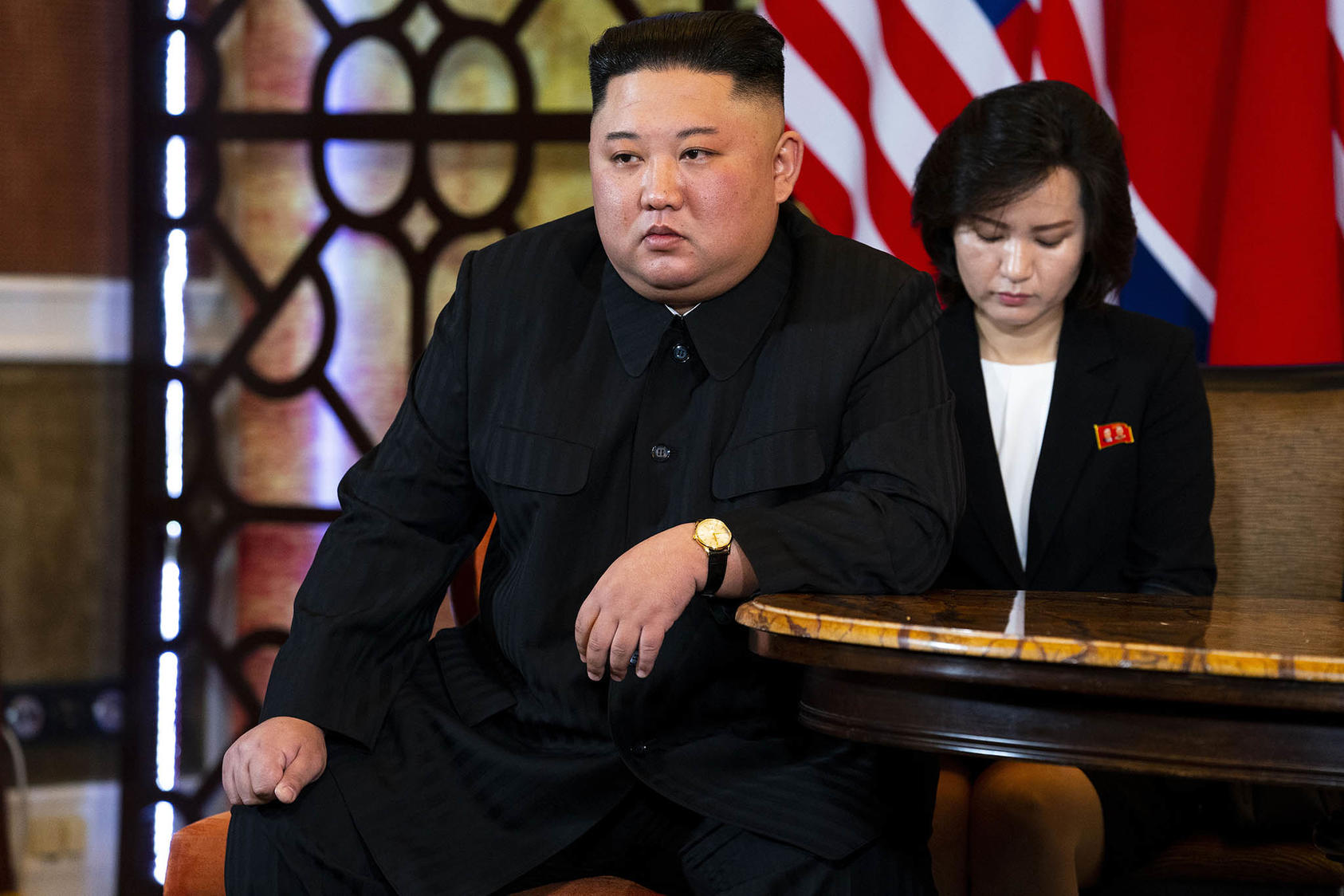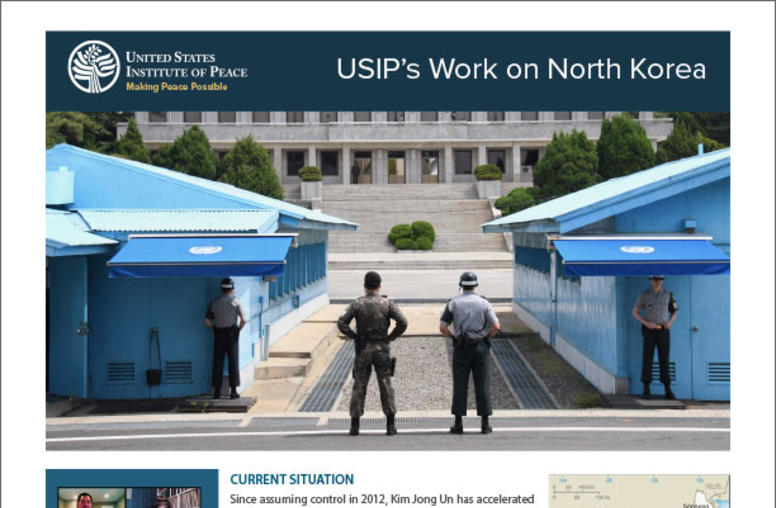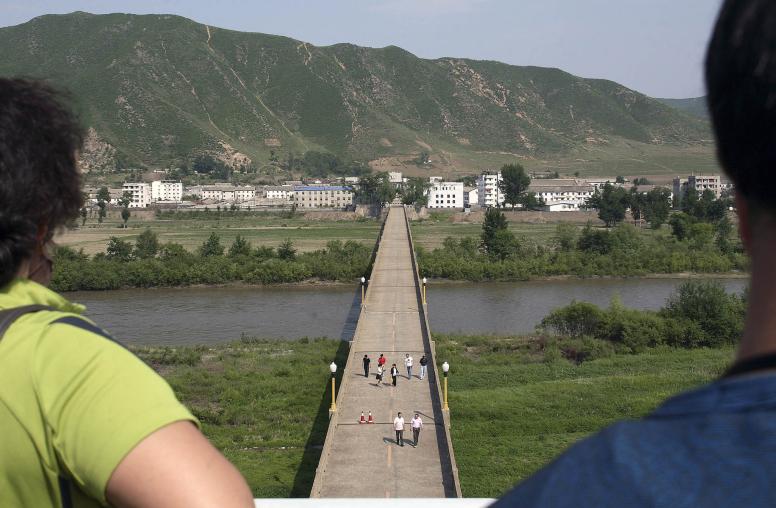A More Resilient North Korea in the Post-Pandemic Era
Kim’s regime has used the COVID-19 pandemic to tighten its political, social and economic control.
North Korea in the post-pandemic era is becoming increasingly resilient and authoritarian, and less reliant on conventional interactions with the international community. As a result, the U.S. government may need to reconsider its reliance on sanctions as a means to influence the regime in Pyongyang.

North Korea’s Response to the Pandemic
North Korea’s response to the COVID-19 pandemic appeared exceedingly severe and hardly sustainable from an outsider’s perspective. For nearly three years, it applied stringent lockdowns and quarantines, halting even the transport of fishing boats and illicit goods into the country. The regime also undertook frantic political measures to control the virus, including executing both officials and citizens who violated their rules. As a result, while North Korea claimed no confirmed COVID-19 cases for over two years, many North Korea watchers doubted the regime’s ability to handle the challenge that aggravated its existing vulnerabilities.
However, North Korea appears to have coped through its unique art of muddling through. Based on its perception of the current unfavorable security environment, North Korea has adopted an intensified autocratic approach, leveraging the pandemic crisis as an opportunity to increase its political, social and economic control. Seven significant policy measures in North Korea since the onset of COVID-19 suggest that the country has achieved better control over its border and people, although some potential turmoil always exists.
Seven Major Policies that Made the Regime Resilient
The first notable policy change during the COVID-19 period is that the North Korean regime has become much more selective in choosing international partners, rather than indiscriminately opening up to the world. Notably, North Korea has declined all vaccine assistance through COVAX, the international vaccine collaboration mechanism, and rejected support from the United Nations Children’s Fund and World Health Organization for COVID-19. In the summer of 2022, after admitting the presence of COVID-19 cases within the country, Pyongyang sought and accepted support solely from China, rejecting assistance from the broader international community.
Since the beginning of 2023, North Korea has actively pursued stronger political and economic ties with China, Russia, Cuba, Iran and other authoritarian nations, while reassessing its relations with the rest of the world. Although North Korea has started allowing foreigners back into the country, the selection of nationalities remains highly restrictive. In November, North Korea explained that its plans to withdraw its foreign missions from Uganda, Angola, Spain, Hong Kong and potentially more countries, while opening new diplomatic missions elsewhere, were “in conformity with the development of international environment.”
Second, North Korea navigated its intensifying economic hardship by resuming stronger control over trade and markets. With its gradual opening of borders with China and Russia, the regime has started to assert stronger central control over the distribution of its imports to markets while still leveraging market forces. The challenges posed by the COVID-19 pandemic, such as difficulties in procuring fuels, raw materials, capital goods and consumer goods, prompted the government to tighten control over the allocation of these limited imports and production yields. This move aims to increase the central share of resources in the economy, inevitably reducing the portion that reaches ordinary citizens.
Third, Pyongyang has implemented a more robust system to control its populace through the introduction of the Law on Emergency Anti-epidemic Work (enacted in August 2020 and amended in May 2022). While this measure is a response that any country might have adopted, it includes regulations that legitimize the regime’s stringent control and heighten individuals’ obligations in emergency anti-epidemic measures. Consequently, the regime elevated its party’s discipline and inspection departments to enhance overall supervision of state organs and citizens.
Moreover, officials have faced more frequent and direct guidance under Kim Jong Un’s one-man rule for their responses to COVID-19. Through state-controlled media, the regime deliberately underscored Kim’s crisis management leadership, describing it as both impeccable and irreplaceable. He has also met with officials more frequently by convening meetings within the party in an “enlarged” format, aiming to instill in them a sense of mission and responsibility, as well as to evoke a sense of awe.
Fourth, North Korea reverted to relying on its military to stabilize society during the pandemic and enhance productivity in agriculture and industry. Historically, the North Korean regime has routinely deployed the Korean People’s Army (KPA) for tasks such as construction and harvesting. However, there is now a heightened emphasis on boosting the morale of the KPA and leveraging its strength to contribute more significantly to the regime, particularly due to the military’s resilience and effective control amid the challenges posed by COVID-19.
Notably, Pyongyang recognized the instrumental role of the KPA’s capabilities during the pandemic. Since early 2020, authorities have enhanced border security with new primary and secondary fences, upgraded existing barriers, widened patrol paths, and erected garrisons, watchtowers and guard posts — tasks traditionally handled by the military. Additionally, the military also played a pivotal role in rehabilitating society and executing various social plans, including housing construction. Munitions factories were also tasked with producing agricultural machinery to boost agricultural output. In response, the regime consistently commended the military and urged the public to actively participate as “activists in the traits of assisting the army.”
Fifth, the regime has extensively harnessed cyberspace for daily state affairs, aiming to enhance the lives of the general population and engage in cyber operations against adversaries. For the North Korean political and military elite, the internet is not merely a leisure activity but a critical tool that helps them access prohibited technologies and knowledge and facilitate operational coordination. In the aftermath of the COVID-19 pandemic, the internet has emerged as the primary means of earning foreign currency, mostly through illicit and malicious ways, supplanting traditional physical exchanges and trades.
Although the majority of residents remain without direct internet access and can only connect to the country’s intranet, called Kwangmyong, an increasing number of elites have been enjoying a range of information and communication technologies across various sectors, including economic, education, health and athletics on the network. This phenomenon existed before the pandemic but has now fully matured. Video conferencing for national political meetings has also surged during the pandemic. Nationwide conferences and exhibitions, such as the Nanotechnology Sector Science and Technology Exhibition and the Science and Technology Festival, along with lectures in universities, have transitioned to virtual formats.
Sixth, since 2021, the regime has initiated more national events highlighting Kim Jong Un’s respect and pride for the young generation. While childhood immunization coverage dropped precipitously from 2020 to 2022, Kim attempted to portray himself as a leader who prioritized the well-being of the most vulnerable citizens. Early in the pandemic, he raised issues related to child nutrition and health, leading to the adoption of a new childcare policy in 2021 and a childcare law in 2022.
Beyond taking measures addressing basic needs, Kim has intensified his interactions with the younger demographic to foster loyalty to his regime. The regime organized the 9th Congress of the Korean Children’s Union (KCU) in 2022, marking the event’s return after a five-year hiatus. Subsequently, there has been an increase in KCU gatherings, where participants engage with regime elites either in person or through letter relays, expressing their allegiance to the supreme leader and his party. Also, the frequent appearances of his “most beloved daughter” at official events underscore Kim’s deliberate efforts to engage the attention of the next generation in state affairs.
Seventh, the North Korean regime strategically leveraged social media as a diplomatic tool to glorify the external image of North Korea amid the pandemic, employing a more sophisticated and extensive approach. Traditionally, state-owned media outlets such as Uriminzokkiri unilaterally shared video clips through their social media accounts. However, during the pandemic, state media also established two-way communications with individuals on the worldwide web. Specifically, numerous individuals — likely affiliated with the North Korean regime — have shared glimpses of their daily lives, showcasing aspects of cultural life, scenic landscapes and children’s school experiences on popular online platforms. As examples, Song A and Yumi have presented curated narratives of their everyday lives in Pyongyang through vlogs on YouTube. These state-orchestrated efforts are designed to soften North Korea’s national image, portraying it as a friendly and secure destination.
More than Sanctions
COVID-19 has undoubtedly brought hardship to the North Korean people, but it has also instilled the government with more confidence, better control and increased resilience, and provided additional toolkits for the regime to recover from the next crisis. The regime adeptly maintained a delicate balance between frustrating and encouraging its people, as well as between progress and regression. Meanwhile, it has heavily invested scarce resources to accelerate its nuclear doctrine and warfighting capabilities, posing a threat to the U.S.-South Korea alliance.
Given that North Korea survived even self-quarantine during COVID-19, it is unlikely that more severe sanctions, whether imposed by individual countries or through a U.N. Security Council resolution, will change the regime’s behavior. Given Russia’s war in Ukraine and U.S.-China competition, it is also unlikely that new multilateral sanctions could even be implemented in the near future. A reliance on sanctions enforcement as a means to influence Kim’s regime is unlikely to improve prospects for engagement with North Korea, let alone contribute to its denuclearization. In this unprecedentedly divided world, if the United States, European Union, South Korea or Japan collectively strengthen their individual sanctions, it will only further push North Korea closer to China and Russia.
A more unwavering and discerning approach to coercion, such as disrupting North Korea’s enduring autocratic and closed rule through information campaigns, is essential, accompanied by engagement that responds to the urgent and genuine needs of the North Korean people. The initial imperative is gaining a comprehensive understanding of contemporary North Korea, avoiding the temptation to categorize it simply as an enigmatic state.
Kyung-joo Jeon is a visiting expert at USIP and a research fellow at the Korea Institute for Defense Analyses.



